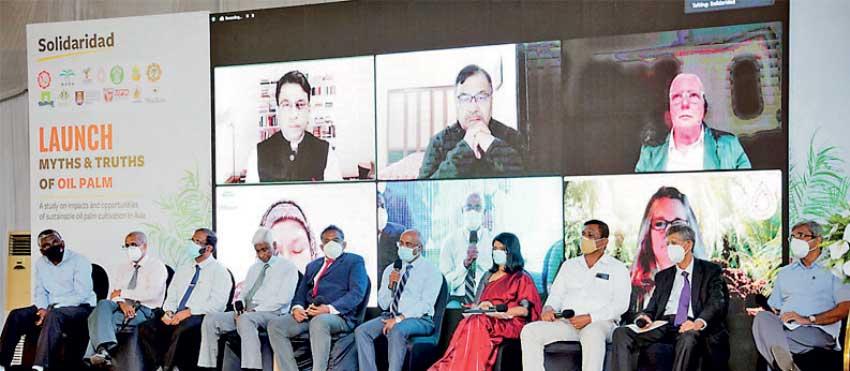Reply To:
Name - Reply Comment

A publication titled ‘Myths and Truths of Oil Palm’ was recently launched by Solidaridad Network Asia Limited, a civil society organisation facilitating the development of socially responsible, ecologically sound and profitable supply chains. The event witnessed the presence of experts in the oil palm industry representing over 19 countries.
The research-based study provides information and assessments on palm oil through an in-depth literature review written following independent investigations by over 15 universities and research institutes on cultivating oil palm. The research was supervised by Dr. Maja Slingerland of the Wageningen University, Netherlands.
In the recent past, several protests have been held against the cultivation of palm oil in Sri Lanka and the publishers opine that the recent publication debunks many myths and false beliefs on palm oil. The publication further sheds light on how the cultivation of oil palm supports socio-economic factors and the environment.
In April 2021, the incumbent government banned the import of palm oil and imposed a ban on cultivating oil palm. The government was also of the view that every year 10 percent of trees should be cut down in order to completely put an end to the cultivation of oil palm in 10 years’ time.
Speaking at the launch, Solidaridad Managing Director Dr. Shatadru Chattopadhayay said the launch of the publication was expedited to debunk myths regarding the cultivation of oil palm following the aforementioned policy decision taken by the government.
It was back in 1968 that oil palm was initially cultivated in Nakiyadeniya, Galle and over the course of 54 years it has spread to Kalutara, Ratnapura and Kegalle Districts. Some highlights of the research indicated that Sri Lanka annually imports 180,000-220,000 MT of vegetable oil. This can be met with 50,000 ha of oil palm or 271,000 ha of coconut.
Oil palm yields 4 to 5 times more oil per ha. So far no evidence has been found on soil and water resource degradation in oil palm growing estates in Sri Lanka. The research further indicated that the average profit generated per hectare per year was of Rs. 900,000 for oil palm, Rs. 280,000 for coconut, Rs. 70,000 for rubber and Rs. 45,000 for tea. Studies also indicate that while 10,548 cubic metres of water is needed for the production of coconut oil, only 3946 cubic metres of water is needed for the production of palm oil.
In addition, the daily wages per month for workers was found to be between Rs. 30,000-50,000 for oil palm workers, Rs. 25,000 for tea estate workers and Rs. 18,000 for rubber tappers.
In her comments, one of the panellists, Margot Logman, Secretary General of the European Palm Oil Alliance said that the alternative to palm oil is sustainable palm oil and that they need to win the trust of consumers with facts and not emotions in support of palm oil in Europe. Addressing the gathering, President of the Haritha Derana Smallholder Association Nimal Wijesinghe said that small farmers in the region had developed misconceptions about oil palm primarily because they didn’t grow it and were not aware of the truths about the crop. But he said that they were more interested in growing the crop once they learned about the higher profit and income of oil palm cultivation over other crops.